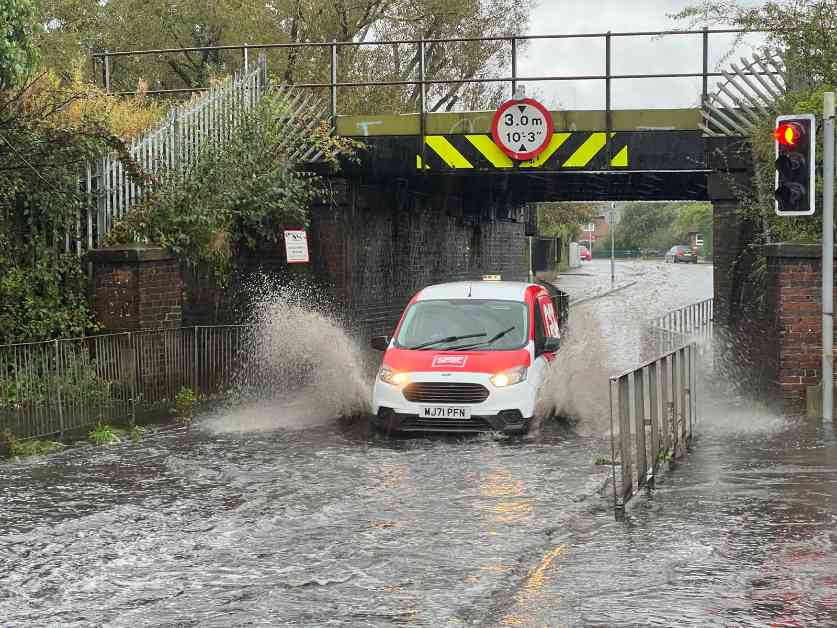Heavy rainfall has inundated Warrington, causing widespread flooding in various parts of the town. The Met Office has issued a yellow weather warning that is expected to last until midnight, with reports of continuous heavy rain throughout the day. One area significantly affected by the flooding is Hawleys Lane in Dallam, known as a hotspot for flooding in the region.
In recent years, efforts have been made to address the longstanding issues of flooding in the area, but the current deluge has proven challenging to overcome. The situation in Hawleys Lane underscores the vulnerability of certain areas to extreme weather events, highlighting the need for ongoing mitigation efforts to protect residents and infrastructure.
Sankey Valley has also experienced significant flooding, with water overflowing into surrounding areas. The impact of the torrential rain is evident in the disruption caused to daily life, with several roads rendered impassable due to the rising water levels. The image captured by Pete Carroll captures the severity of the flooding in Dallam, painting a vivid picture of the challenges faced by residents in the affected areas.
### Roads Affected by Flooding
Several roads in Warrington have been severely impacted by the flooding, leading to traffic disruptions and safety concerns. Chester Road in Daresbury is currently partially blocked in both directions, creating difficulties for motorists trying to navigate through the area. The blockage between the A558 Daresbury Expressway and Hobb Lane has resulted in slow-moving traffic and delays for commuters.
The canal bridge at Cliff Lane in Grappenhall has also presented challenges for motorists, with reports of difficulty passing under the structure due to the high water levels. Massey Brook and Weaste Lane are among the roads that have become impassable in parts, further exacerbating the transportation issues caused by the flooding. The extent of the damage and disruption caused by the flooding underscores the urgent need for coordinated response efforts to address the aftermath of the extreme weather event.
### Impact on Residents and Businesses
The flooding in Warrington has had a significant impact on residents and businesses, disrupting daily activities and causing inconvenience to many. The challenges posed by the rising water levels have forced residents to navigate through flooded streets and find alternative routes to reach their destinations. Businesses in the affected areas have also been affected, with some facing closures or reduced operations due to the flooding.
The resilience of the community in the face of such adversity is evident in the efforts to support each other and overcome the challenges posed by the flooding. Local authorities and emergency services have been working tirelessly to respond to the situation and provide assistance to those in need. The spirit of solidarity and cooperation demonstrated by residents and businesses reflects the strength of the community in times of crisis.
### Mitigation Efforts and Future Preparedness
The recurring issue of flooding in Warrington highlights the importance of ongoing mitigation efforts and proactive measures to address the impact of extreme weather events. The investments made in recent years to mitigate the historic problems in the area have shown some effectiveness, but the current situation underscores the need for continuous improvements to enhance resilience and preparedness.
As climate change continues to pose challenges and increase the frequency of extreme weather events, it is crucial for communities to prioritize adaptation and resilience strategies to mitigate the impact of flooding and other climate-related hazards. Collaborative efforts between government agencies, local authorities, and community stakeholders are essential to advancing sustainable solutions and building resilience to future challenges.
The flooding in Warrington serves as a stark reminder of the vulnerability of communities to the impacts of climate change and the importance of proactive measures to reduce risks and enhance preparedness. By working together and implementing effective strategies, communities can build resilience and adapt to the changing climate, ensuring a safer and more sustainable future for all.





















